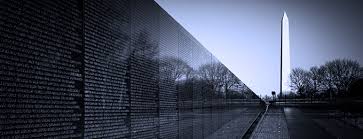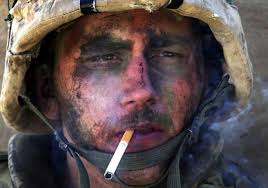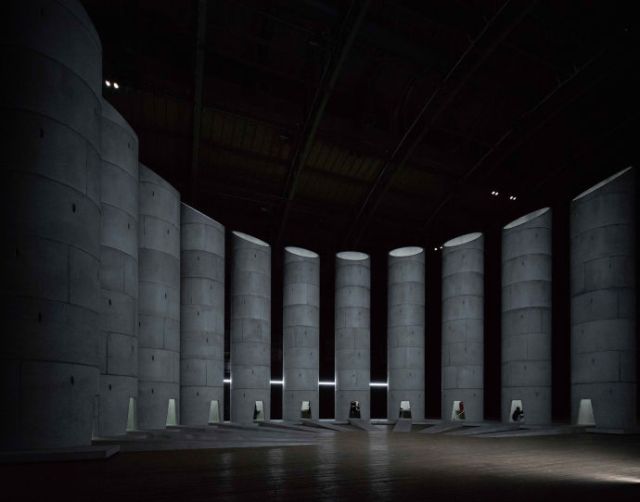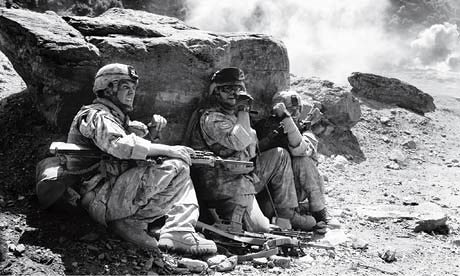Author: bjsilverstein
Maya Lin: Making the Memorial
One thing that’s particularly interesting about how Maya Lin was able to be the designer of the Vietnam War Memorial is how that she was able to do it as part of a class project she was doing at Yale, and not for the competition, so it was just designed the way she thought it should look like. The design and her inspiration for the project came from and architectural seminar course where they focused on funeral architectural design and how people expressed their emotions through funerary constructions. In her quest to come up with a great design, she made the decision to not do any specific research regarding the Vietnam war, and the political strife that surrounded it either. She believed that politics had eclipsed everything the veterans had done with giving their lives for their country.
At her school she talks about how the power of a name is extremely important, and at Yale they have at Memorial Rotunda inscribed with all the alumni that have been killed in wars. Another memorial that made a lasting impression on her and aroused her curiosity was the monument of the missing soldiers of the WWI battle of the Somme by Sir Edwin Lutyens. This monument included over 10,000 names of people who were missing because they couldn’t be identified, “the memorial acknowledged those lives without focusing on the war or on creating a political statement of victory or loss. This apolitical approach became the essential aim of my design; i did not want to civilize war by glorifying it or by forgetting the sacrifices involved. The price of a human in war should always be clearly remembered. This is why her design was a display suspended above ground that just listed the names of all the fallen soldiers in battle, and served as a way of remembering them while not glorifying war in any way with the execution.

Making the Memorial. https://2017arth4919.files.wordpress.com/2017/01/maya-lin-making-the-memorial.pdf (Accessed April 29, 2017)
NPR Review of Tucker war photography
War/Photography is an exhibition that happened at the Corcoran Gallery of Art in Washington. “It has the usual array of iconic war photographs: the falling soldier during the Spanish Civil War, Marines raising the flag at Iwo Jima and the Vietnamese general executing a suspected Viet Cong member.” This exhibition included numerous renowned photographers from around the world dating back to photos taken in the 1800’s. In this review, it explains that strength of the exhibition isn’t the specifics, but how the presentation makes a collective whole and tells a war story. This exhibition connects more than 309 different photos, from 25 nationalities, from wars that have been spanning for nearly the last 200 years. Tucker talks about how there was a culmination of a million images they had to strategically pick in order to make the exhibition flow well together. Walking through the gallery, each section is differentiated by themes, and aspects of war such as things from recruiting, medical care, fighting, prayer, and more.
One piece included in the exhibition is a piece called Aftermath: Shell Shock and Exhaustion, where it shows an image taken my Don McCullin of a shell shocked soldier in 1968, which hangs several frames away from a piece done by Luis Sinco titled Malbaro Marine. These photos had been taken nearly 40 plus years apart, but relate so much to each other with the similar gazes they share on their face suggesting the horrors that they had witnessed during war. “Wars don’t end, you carry them with you. our fathers’ wars are our wars and our wars are our children’s wars.


The Picture Show. http://www.npr.org/sections/pictureshow/2013/07/12/201327477/what-do-cameras-and-combat-have-in-common (Accessed April 29th, 2017)
Taryn Simons: An Occupation of Loss
Taryn Simons typical media of work usually deals with both text and photography, but in this piece An Occupation of Loss, she makes an installation that’s meant to be a performance piece. This installation she did was done alongside Shohei Shigematsu at the Office of Metropolitan Architecture. They were able to get thirty different mourners from fifteen different countries to sit in the semi circle of eleven concrete towers at the Park Avenue Armory. The towers recall the pipes of an organ, where visitors who enter the are exposed to a live performance activating the “dirges, songs, and weeping of the professionals within.”
This piece ties into the themes of government bureaucracy and social realism, where Taryn Simons would bring in these thirty different people from fifteen different countries all to New York City. One of the hardest aspects about this project for her was all of the documentation paperwork she had to go through of getting these people visas, which she said ended up being more than a foot high tall of papers. “The documentation of the visa process serves as a shadow accompaniment to the show, both a reminder of the administration that often accompanies death, and Simon said of authority and how it’s establish and the systems that we create and also adhere to, to organize ourselves.” In the performance each mourner had their own individual style of mourning that they brought to portray to the audience what mourning is like in different cultures from the rituals themselves to what clothing they wear too.

Taryn Simon’s Varieties of Mourning. http://www.newyorker.com/culture/culture-desk/taryn-simons-varieties-of-mourning (Accessed April 29, 2017)
Shot that nearly killed me: John D McHugh

This picture is the last picture that John D McHugh was able to take before he had been shot while photographing the battle. He had been embedded with the US soldiers in Nuristan for several weeks when they had gone to help a fellow unit of soldiers who had been ambushed. He recalls seeing bodies on the road with people who were already dead, while there were also people writhing in pain. All of the sudden the Taliban started shooting from the mountains and he quickly jumped behind a rock panicking.
As soon as the shots kept firing, they all retreated behind a Humvee where bullets were swarming from everywhere, and at this point he had already acknowledged the chances of him getting shot. He recalled the bullets flying through the air sounding like a swarm of bees. Eventually a bullet went through his ribs and out of his lower back. He explained the entry wound was the size of a penny, and the exit bigger than the palm of his hand, while he was convinced he was about to end up dying on the battlefield while trying to photograph the war. He kept thinking the worst, like, “what if i don’t die, and i’m paralysed for the rest of my life?” It had been 25 minutes before anyone could get to him, and as he was being picked up he reached to grab the camera he had fallen on the ground. The medic joked to him about his injury, saying “hell I can see right through you,” he then at this point knew he would recover. “I love my job but getting shot made me think about life beyond work. I proposed to my girlfriend two months later, and we had a baby last year.” This near death encounter help shape Johns photographic and family career.
The shot that nearly killed me. https://www.theguardian.com/media/2011/jun/18/war-photographers-special-report (Accessed April 28, 2017)
How Women are changing the nature of war photography
In this article written by Melanie Abrams, she talks about Robert Capa and how he had defined the image of war photography. Ever since this she talks about how conflict photography has been seen more as a man’s job, while the stories of women war photographers have been put to the side. In the article she begins to explain that today there are far more women who are able to photograph in war zones, such as Susan Meiselas, however the amount of female war photographers in the Magnum photo agency only totals 7 out of a total 79 international photographers, showing how minimized a women’s role is in war photography.
Explained by British photographer Jenny Matthews who see’s much more women in the photojournalist realm now, but women are stilled outweighed by men. “It is much harder for women, because of the assumption that we don’t have the killer instinct, or the persistence to hang around in the rain with a heavy bag.” A lot of the limitations she’s talking about are physical, and a stereotype of how men are the only ones capable of carrying large amounts of equipment while traversing through treacherous war infested terrain. Meiselas recalls while she was working in Nicaragua and El Salvador that working in the war zone isn’t just a physical toll but also an emotionally demanding one too, where you have to be aware of the dangers on the streets.
Meislas thinks that women can sometimes be accused of having emotions interfere with their work. She also points out differences between male and female photographers: “Women sometimes think of better ways to capture a story. We look behind the action and have different priorities, such as the human interest.” She talks about how that twenty years ago there were rarely any images of women who were left behind in conflict zones, but now you can see women in refugee camps all the time working the same way as the men do.
From the fringes to the frontline. https://www.theguardian.com/artanddesign/2008/nov/17/women-photography-war-exhibition-barbican (Accessed April 28, 2017)
The shot that nearly killed me: Adam Ferguson
In this article about the shot that nearly killed me, there are various accounts of photographers who had near death experiences, but i chose to write about the one done by Adam Ferguson in Afghanistan. In this article he recalls being the first one on the scene because normally at a bomb scene like that the authorities would shut down the entire area to prevent anyone from getting in. However, Adam was able to get into the center of where the explosion had been and had seen mutilated bodies and fire, while also hearing screeches from the survivors in shock and pain. He recounts feeling very scared because there was still continual popping and hissing from the smaller explosions as the building had been collapsing. At this point in time there was still a risk of another bomb going off, and he said “it was one of those situations where you have to put fear aside and focus on the job at hand: to watch the situation and document it.
The photo that was taken was a women being escorted out of a building accompanied by a soldier and civilian, while she’s frantically screaming and in pain. Adams believed that this women completely capture the entire mood of the tragic event. He talks about seeing this women who was at the wrong place at the wrong time in this tragic event, which he really wished he could have figured out how she felt then and how she’s doing now. “As a photographer you feel helpless. Around you are medics, security personnel, people doing good work. It can be agonizingly painful to think that all you’re doing is taking pictures.” After taking these photos he won a World Press award, which he felt sad about because people had been congratulating him and celebrating him heavily all about this tragic event that he captures. He believes he made up for it though by deciding that his purpose was for the people to see his story through the lens of his camera.
The shot that nearly killed me. https://www.theguardian.com/media/2011/jun/18/war-photographers-special-report (Accessed April 27, 2017)
4,000 U.S. Deaths
This article is about the case of a Zoriah Miller a freelance photographer who was banned from covering the Marines after he posted several photos of soldiers graphic deaths. Miller who had taken images of the marines kill in a suicide attack and posted the images online was banned from working with the Marine corps any longer. As opposed to the Vietnam war where photojournalists were given open access to the scenes of battle, the Iraq war was different in that after five years and 4,000 american deaths, only very few photographs showed up. This brings up the issue of trying to communicate with the world and show people what’s happening without the government trying to cover it up like how the Bush administration had done.
Journalists today believe that it’s much harder than it was in earlier years to accompany troops on combat missions where they could photograph the events firsthand and share them with the public. In the article it even talks about how memorial services for killed soldiers, which once use to be open to the public is now very hard to gain access to. They even talk about how taking photos of prisoners and detainees now is exceedingly difficult, and makes their entire job harder because they can’t uncover the truth to the public. Miller said, “It is absolutely censorship, I took pictures of something they didn’t like and the removed me. Deciding what i can and cannot document, I don’t see a clearer definition of censorship.” The Marine corp responded to Miller’s claim, saying that they weren’t trying to place limits on the news and media, but rather because he had broken embedded regulations. However in a case where Miller’s photos were under review, an initial assessment showed he had not violated any embedded rules.
Eventually when Miller was 32 he was embedded with Company E of the Second Battalion, where he denied the Marines request to join the city meeting, and would instead go on a trip with foot soldiers nearby. He then witnessed a suicide bomber inside the council meeting who ended up killing 20 people, 3 of which were marines. His photos show a scene of pure horror and mutilation with body parts scattered. These images were also questioned, which is what this entire article is all about. The countless deaths of U.S. soldiers, but only little photographic evidence to show about it.
4,000 U.S. Deaths. http://www.nytimes.com/2008/07/26/world/middleeast/26censor.html?_r=2&pagewanted=1 (Accessed April 27, 2017)
Steve McCurry
“If anyone were entitled to feel weary of the world, it might be a photographer who had traveled the breadth of it for decades; who’d brought news of one war then watched it turn into another close to home; whose caught the wild fear in strangers’ eyes and devastation on the ground; who’d seen the history repeat and subvert itself.” This introduction statement to the article shapes it as a whole in analyzing the danger but curiosity that surrounds photographing war. Among photographers, Steve McCurry’s photographs dating back to the seventies in Afghanistan are some of the most provocative war photographs today.
Steve first went there in 1979 after leaving his job writing the newspaper in Philadelphia where he would meet someone in Pakistan who wanted to show him what was really happening across the border. “When i went into Afghanistan the first time what i saw were people being killed and villages being destroyed. McCurry recounts this to the author and talks about how people in Pakistan were in fear and everything was coming apart to the point where they were going to need to leave their home. Now that McCurry recounts his experience he talks about how there’s always been war, but during the time in the 60’s and 70’s when he originally arrived there, it was possible to walk around the streets without the fear of blowing up at any time. He talks about how the government has been wasting billions of dollars that could have been used for health and education anywhere, and that we could change this place and make it more peaceful.
One image that McCurry is most well known for his his image of an Afghan girl that appeared on the front of National Geographic. The image is striking, the girl with dark skin and bright green eyes looking extremely nervous. The image was thought to be too stark and for the cover of national geographic something more friendly should have been displayed, but eventually it would become the first page of the article and become one of the most well recognized photos in modern history.

Steve McCurry. http://www.telegraph.co.uk/culture/photography/10307952/Steve-McCurry-I-dont-think-pictures-are-worth-dying-for-but-I-dont-want-to-live-knowing-I-was-timid..html (Accessed April 27, 2017)
